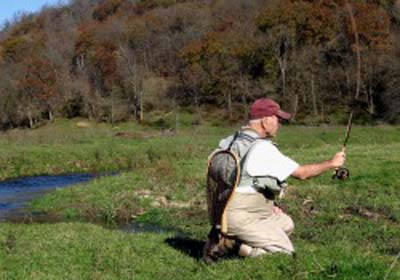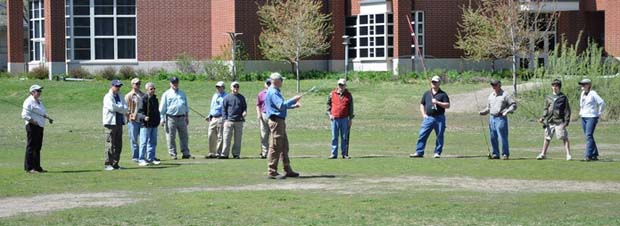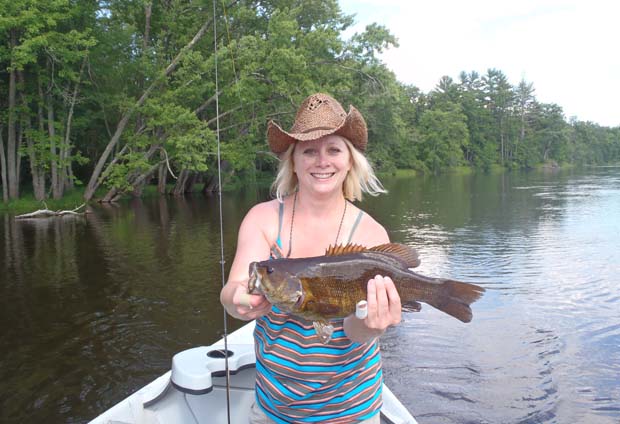Fly-fishing skill starts off the water says octogenarian Jack Haines. Haines, a seasoned fly fishing instructor, angler, fly tyer and artist offers sage tips for getting started and staying plugged-in to the sport of a lifetime
The following is an excerpt from Tori J. McCormick article in the Star Tribune titled Fly-fishing skill starts off the water.
[dropcap]J[/dropcap]ack Haines turns 80 in May. He’s from of Minneapolis, Minnesota – still fishes, ties flies and even paints fly-fishing watercolor portraits. Not surprisingly, he said learning to fly-fish is far easier today than it was when he started. “In the 1970s and early 1980s, there was a revolution in fly-fishing,” said Haines, a certified instructor. “More books were published, instructional videos came out, fly shops started to pop up, and classes on how to fish were offered. It’s really 100 times easier today than when I began, which is good.”
Haines’ view is supported

Jack Haines is a true renaissance man of fly fishing. He’s a consummate fisherman, fly tyer, painter, and writer. Jack is a retired newspaper copywriter, and served as MFF Newsletter Editor for several years before turning his duties over to pursue his painting. Minnesota Fly Fishers image.
“Fly-fishing looks difficult to the naked eye, but that needs to be put into context,” said Mark Reisetter, a guide and fly-fishing instructor from Lewiston, Minn. “Even if you’re new to the sport, you can still catch fish on a regular basis. I think there’s an aura of difficulty about fly-fishing and casting that’s exaggerated and keeps people from doing it. That shouldn’t be the case.”
As much as Haines loves to fish, he also takes satisfaction as an instructor. For more than 20 years, and as a member of Minnesota Fly-Fishers, a group based in the Twin Cities, Haines has taught novices the fine art during the group’s two-day course on the basics held each spring.
“I really enjoy teaching,” said Haines, who recommends that novices take a class. “It’s fun, for example, to see people all of a sudden get it when they’re casting. There’s a steep learning curve in fly-fishing, but you shouldn’t be intimidated by it. It’s about your expectations. Different kinds of fly-fishing require different skill sets that take more time to learn than others.”
What follows are several tips from Haines on how to get started:
Find a mentor
Mentors are indispensable for answering questions and improving fishing skills, he said. To find one, Haines recommended joining a fly-fishing group or organization such as Trout Unlimited or the International Federation of Fly Fishers. “Experienced fly-fishers are pretty good about helping others get started.”
Learn to cast well
Haines said the best fly-fishers he knows all cast well — for distance and accuracy. “You do have to develop a certain degree of skill, but you don’t have to be terrific to catch certain species. Catching smallmouth doesn’t require you to be as accurate as when you’re casting for stream trout during the Trico (mayfly) hatch.” Haines recommended practice and more practice. “I tell people if they can commit to 10 minutes a day for two weeks, they’ll pick it up fairly quickly.”
Hire a guide
Despite the expense, hiring an experienced guide for a half-day trip can shorten a beginner’s learning curve. “You can do it on your own and take years to learn, or you can hire a guide and learn a tremendous amount in only a few hours,” he said. For example, a guided, full-day trip for one or two anglers can run upward of $400. Many guides also provide gear, an expense a person can avoid until he or she is committed to fishing.

Minnesota Fly-Fishers, a group based in the Twin Cities, Haines has taught novices the fine art during the group’s two-day course on the basics held each spring. Photo Minnesota Fly-Fishers.
Use the Internet
Haines said it is a helpful tool for the novice. “There are YouTube videos on just about everything associated with fly-fishing. Look at the videos and get a feel for what fly-fishing is all about.”
Visit your local fly shop
Fly shops sell equipment and offer casting lessons and other instructional opportunities. Haines said shops are also good places to ask questions and meet experienced anglers who can help build confidence. “You can learn a lot about certain aspects of fly-fishing by just listening. Fly-fishing has its own jargon and language in a lot of ways, and it helps to know it.”
Take a fly-tying class
Haines said tying flies will help you learn about insects, hatches, current fly patterns and their hook sizes. “If you’re serious about fly-fishing, I highly recommend a fly-tying class. It’s also a great way to meet others.”
Go fish
Haines said time spent on the water is the best teacher. “There will always be people who tell you that you have to cast a certain way, or do this and that a certain way, but there’s something to be said about learning on your own, on the water,” said Haines. “. . . Fly-fishing is far more than just catching fish. It’s about communing with nature and being on the river, which is a spiritual experience that newcomers may find hard to understand until they experience it for themselves.”
To see images and read complete story, click here . . .
About the author:
Tori J. McCormick is a freelance writer living in Prior Lake. Contact torimccormick33@gmail.com







